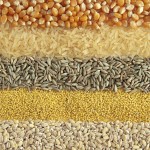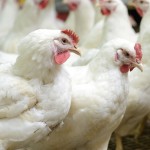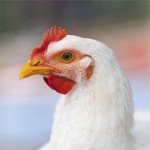Chickens are vulnerable to two particular infections, necrotic enteritis which is caused by clostridia and coccidiosis which is caused by a protozoa (think of bugs so small they cannot be seen without a microscope). A chicken is always affected to some degree by these two organisms and if the infection is severe both diseases result in high mortality. We describe either infection with the term challenge, a high challenge level results in significant mortality while a low challenge may appear as lower than normal feed and water intake for a few days. The spike in water intake is a result of the birds trying to flush the bugs from their system. We do our best to lessen the challenge by providing an optimal environment such as ample space, clean and dry litter, uncontaminated and ample water, nutritionally balanced feed, and adequate light but the threat is always there. Our choice is between not giving our birds the best protection against the diseases that are available or doing nothing and knowing they will get sick. Coccidiosis can be controlled with a high but not 100% degree of certainty by vaccination of the chick at the hatchery or thru the use of coccidiostats in the feed which are not used in human medicine and whose sole function is to control the coccidial challenge. Necrotic enteritis is controlled thru the use of antibiotics which are highly effective if the challenge is mild to moderate or non-medicinal products which vary in their degree of effectiveness. Unfortunately the severity of the necrotic enteritis (NE) infection cannot be determined by any predictable factors. The fact is the birds will be challenged and even if they have the best environment and feed possible it is no guarantee that the challenge will only make them a little sick.
The Canadian chicken industry has voluntary stopped the preventative use of Category 1 antibiotics (those most important in human medicine). The levels are categorized as 1 to 4 with 1 being of very high importance and 4 being of low importance. The use of antibiotics in chicken feed is regulated by the Canadian Food Inspection Agency and requires prescriptions by licensed veterinarians. These regulations dictate which antibiotics can be used and at what level. The level allowed is set to ensure that the enteritis is controlled but not in excess so that the birds are over medicated which can lead to the development of resistant bacteria. The mentality of ‘if some is good, more is better’ does not apply here, the levels have been established using applied research. Antibiotics are not used to make up for poor management practices either they are used to help protect our chickens from getting sick or worse.
The number of alternative products to antibiotic use has grown rapidly in the past ten years. Products such as yeasts, protected organic acids, probiotics and prebiotics are being used in non-medicated flocks routinely. These products act to either crowd out the bad bugs or kill the bad bugs in the intestinal tract. As with any ingredient used in poultry feed they must also be approved for use by the Canadian Food Inspection Agency. The products go thru a stringent application process which requires them to prove their claim of bacterial control. While these products may not be as effective today as antibiotics for controlling enteritis their development is a priority. The ongoing research for alternatives to antibiotic use in poultry is a global poultry industry project as the industry tries to protect our chickens without traditional methods.



